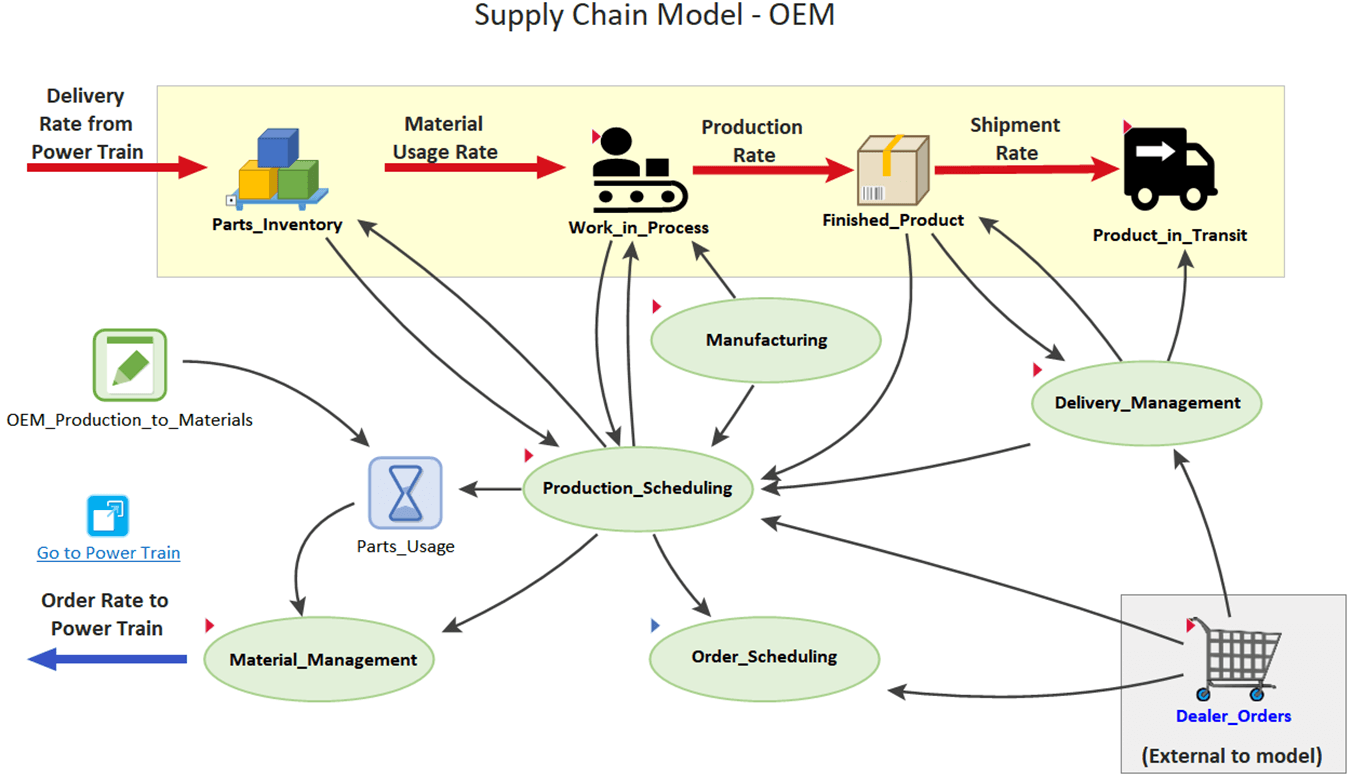Business Systems Applications
Supply Chain & BPM
Supply Chain and Business Process Modeling

GoldSim can be used to complement your existing tactical supply chain and resource management tools in order better address the complexities of your real world business processes and supply chains. The challenge is not only to optimize your supply chain operations and business processes for today, but also to design a truly robust system that can adapt to changing market conditions, uncertain labor markets, and potential disruptive events.
By combining the flexibility of a general-purpose and highly-graphical probabilistic simulation framework with specialized features to support financial modeling and reliability analysis, GoldSim allows you to create quantitative and transparent supply chain and business process models to allow you to ask "what if" questions regarding various alternatives, support your long-term strategic planning efforts and make better decisions in the face of uncertainty.

With GoldSim you can:
- Explicitly incorporate variability and uncertainty into the analysis. Attempting to simulate the future behavior of a supply chain or business system is complicated by the presence of significant variability and uncertainty (e.g., seasonal changes in demand, variations in production rates, fluctuations in the price of raw materials). GoldSim has the ability to represent uncertainty regarding input data and system dynamics.
- Explicitly represent discrete events. Supply chain dynamics and business processes can be significantly influenced by random discrete events, such as a labor strike, a warehouse fire, or a supplier going out of business. GoldSim has the capability to represent random discrete events that can play a critical role in the flexibility, robustness, and overall performance of your business.
- Build models with a top-down hierarchical model structure. Large business models can be very complex with thousands of interrelated components. GoldSim allows you to construct hierarchical multi-layer models that represent greater detail at lower levels in the model structure. As a result, you can build, explore, and explain highly complex models without losing sight of the overall model structure and high-level relationships.
- Dynamically link to external data repositories. Supply chain and business process simulation should be based on current information regarding inventories, order rates, production rates, etc. For large models with large amounts of input data, it can be labor-intensive and burdensome to enter data by hand each time you want to update the model. GoldSim offers the ability to link to ERP and other database systems that represent the most recent information.
- Create easy-to-understand presentations that effectively communicate the structure of your model and the results. The best-designed strategic plans probably won't be implemented if your audience doesn't understand them. GoldSim's user-friendly graphical interface provides you with the tools to communicate with and convince your audience.
Learn More
- Compare GoldSim to other simulation approaches
Examples
Modules
White Papers
- GoldSim: Using Simulation to Move Beyond the Limitations of Spreadsheet Models
- Strategic Planning Applications Using GoldSim
- Supply Chain Management Applications Using GoldSim
